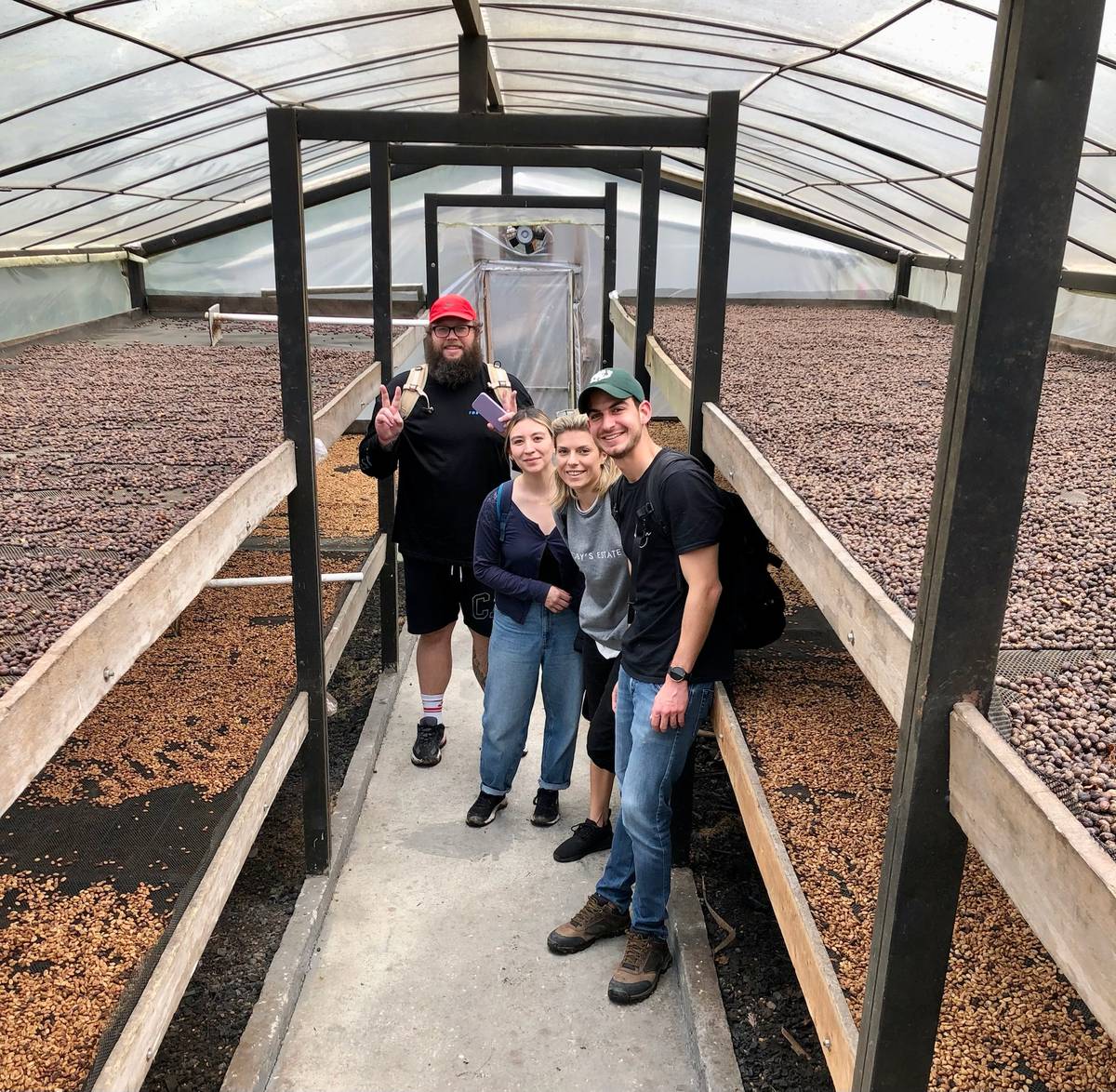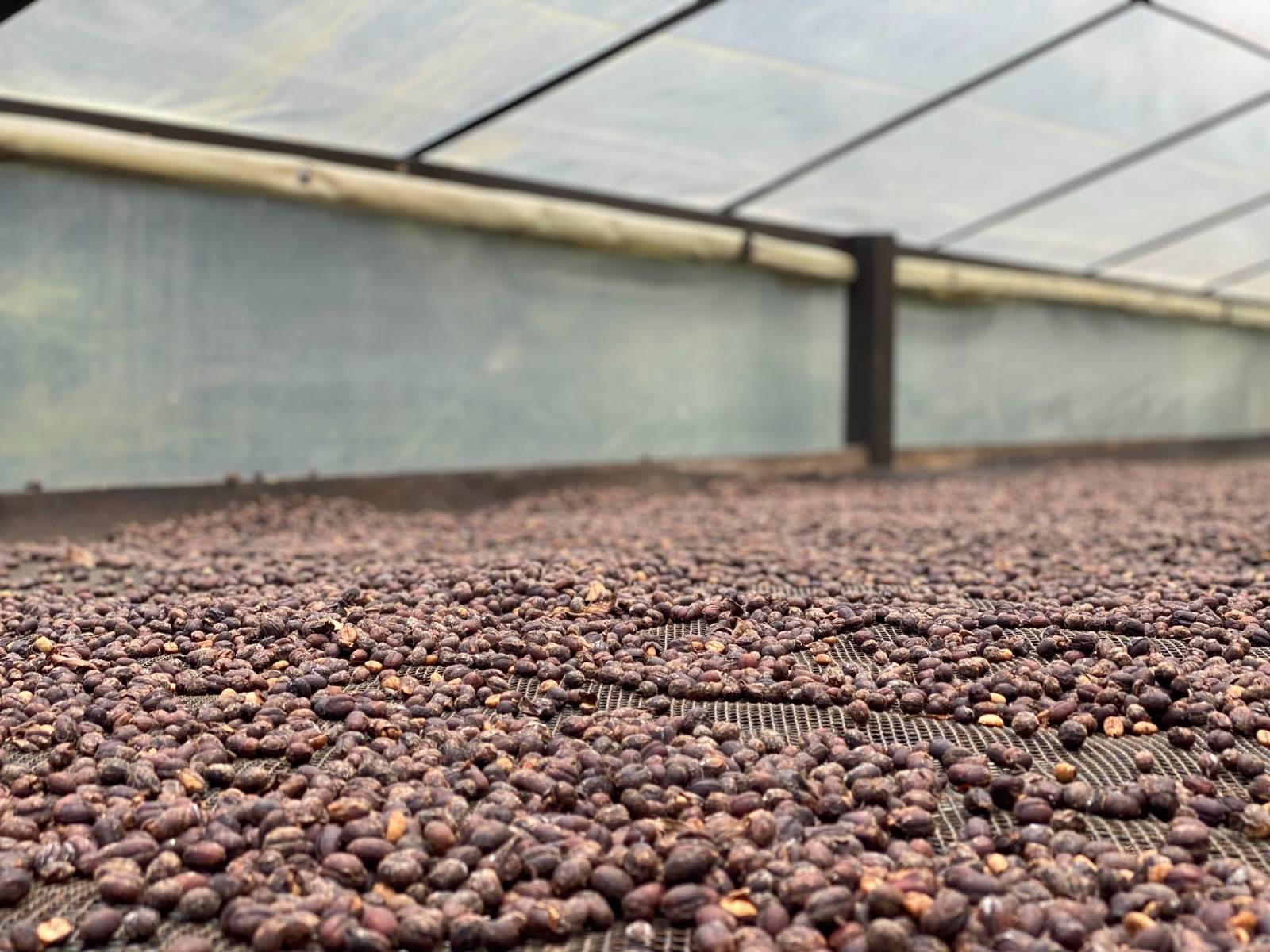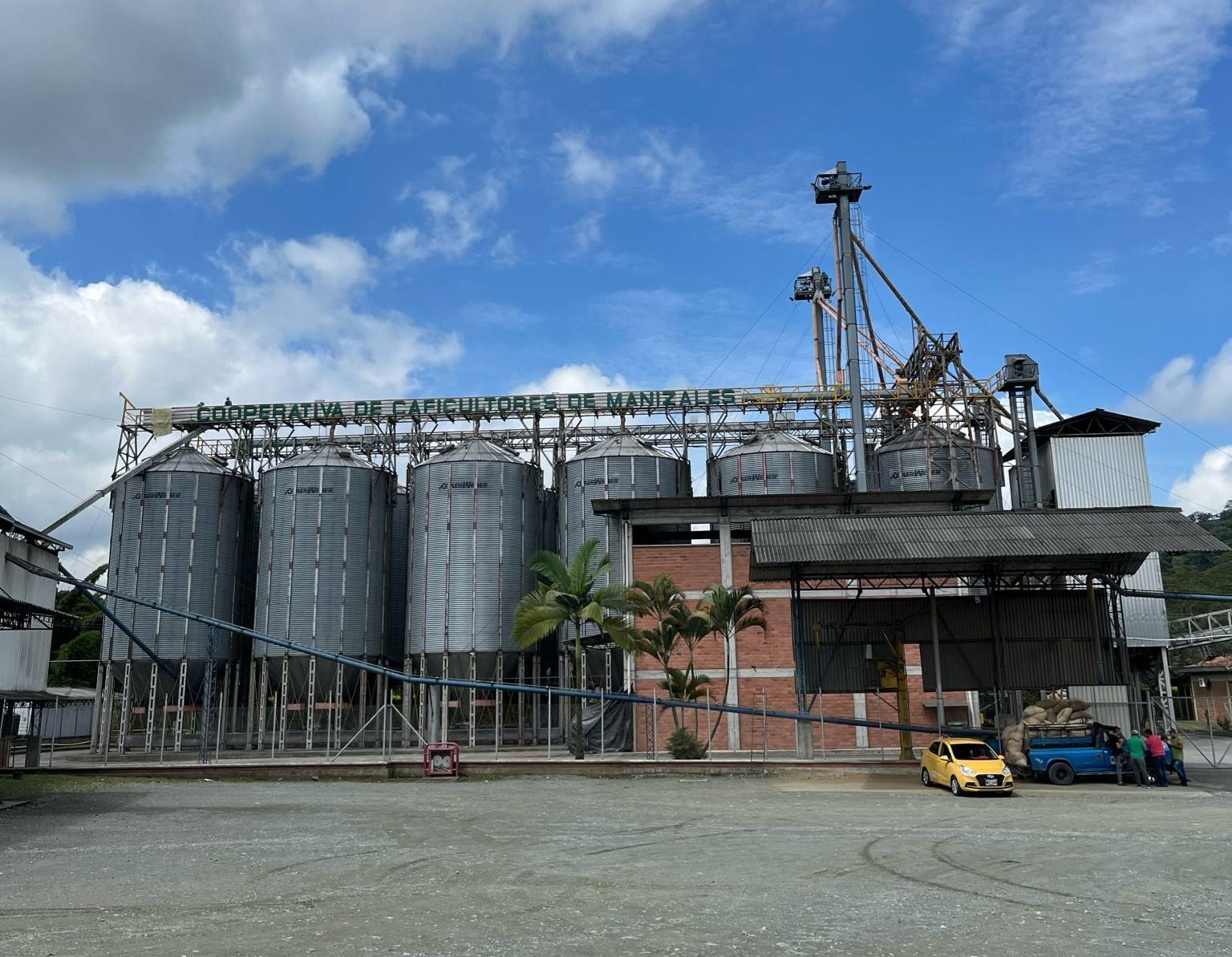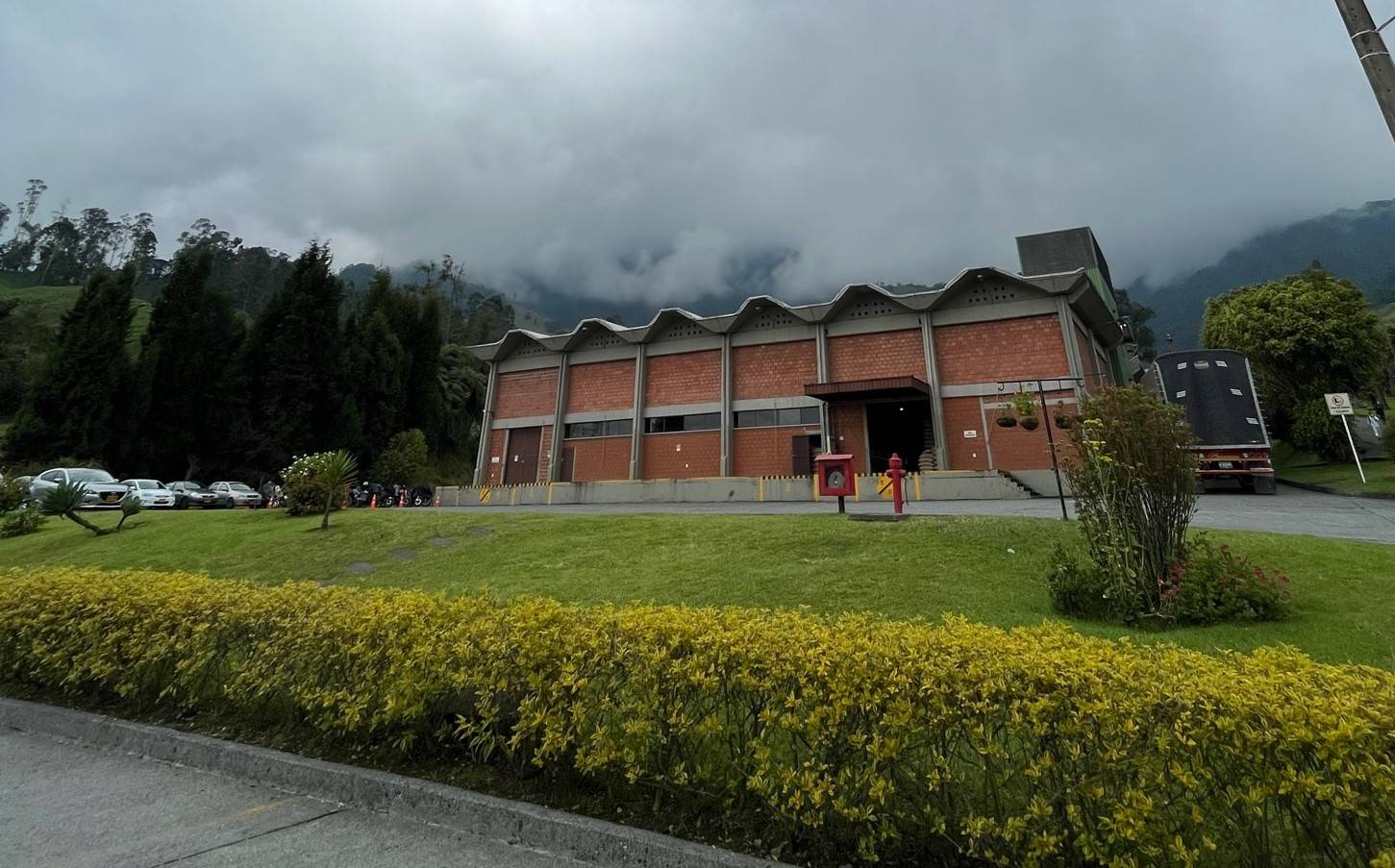
08 Apr 2022
Origin Tour 2022: Colombia
We are back, and what better way to start our origin trip than our first stop at the world-famous La Palma y el Tucan farm in Cundinamarca, Colombia. In addition to their regional program, Delagua, in Sierra Nevada and Creativa Coffee District in Panama, La Palma y el Tucan focuses on two key projects:
1) Estate and Varietals – A project focusing on producing the highest level of coffee excellence and farming in permaculture Sidra, Geisha, SL28, Moka, Java and Typica.
2) Neighbours and Crops – A social project focusing on helping neighbouring producers to get the best out of their more traditional varietals (such as Castillo). The farm currently works with 95 families in the region, and 25 in Sierra Nevada. They purchase their cherries at a premium price and take care of the picking and processing, providing agronomical assistance with the coffee crop as well as diversifying their fields with a sustainable permaculture approach.
La Palma y el Tuca farm is an 18-hectare farm, with 13-hectares of planted coffee in 14 different terroirs (lots). The farm produces around 5,000kg of green beans from their estate and varietal projects and around 350 tonnes from their neighbours and crop projects. Through this, they have mastered four different processes (discussed below). When we talk about the processing methods of coffee cherries, fermentation is the process of breaking down the carbohydrates and sugars in coffee through the microorganisms: bacteria, mould and yeast. It is a process that degrades the sugars in the cherries, creating ethanol, CO2 and organic acids which would heavily affect the cup profiles.
Controlling the environment in which fermentation is occurring can have a significant impact on the final results. Temperature and humidity levels can also accelerate the process or potentially ruin the process by increasing the chance of fungus, which spoils the fruit, leaving undesirable flavours.
 1) Bio-Innovation – To create the fermentation substrate used for bio-innovation, the farm first captures and reproduces the microorganisms found in their forests. They then mix this substrate with cherries that have been ripened to perfection in clay pots for 100 hours, allowing for a sustainable closed cycle. After fermentation, the leftovers are removed and used as compost.
1) Bio-Innovation – To create the fermentation substrate used for bio-innovation, the farm first captures and reproduces the microorganisms found in their forests. They then mix this substrate with cherries that have been ripened to perfection in clay pots for 100 hours, allowing for a sustainable closed cycle. After fermentation, the leftovers are removed and used as compost.2) Lactic – Upon arrival at the wet mill, the coffee cherries are hand sorted and placed in sealed tanks. The removal of oxygen during this stage encourages a higher concentration of lactic acid, which in turn contributes to the organoleptic profile (such as taste, colour, smell and feel) of the resulting cup. This process of fermentation is classified as ‘anaerobic’, as oxygen has minimal interaction with the cherry and there is no agitation.
3) Acetic – This form of processing involves no pre-fermentation stage, instead, the cherry goes straight to the de-pulping stage, where the pulp is completely removed. From there, the bean is left in the fermentation tanks without water for around 36 hours. Regular stirring and turning of the beans in the tank allow oxygen to interact with the bean's surface evenly, encouraging the growth of microorganisms, and as a result, a higher concentration of acetic acid. After 36 hours have passed, the beans are washed and placed on African raised beds to undergo the drying stage of processing. As the bean interacts with oxygen, this form of fermentation is classified as 'aerobic'.
4) Mixed – This process involves a combination of stages found in the lactic and acetic processing methods discussed above. To begin, all cherries are hand-sorted and begin a short pre-fermentation stage. Similar to lactic processing, the cherries are placed in airtight fermentation tanks with limited oxygen. Once removed from the tanks, they are sorted and de-pulped before being left to rest in fermentation tanks again, but this time, they will undergo acetic fermentation and are agitated a few times. Once complete, the beans are then transferred to raised beds.

The next stop on our trip was the Manizales Coop. Founded in August 1960, The Manizales Coop is in the municipality of Manizales, Colombia. From the beginning, it was sponsored and supported by The National Federation of Coffee Growers (NFC), which help with the access to working capital for the purchase of parchment and the construction of modern infrastructure. The NFC was created in need of giving a fair price to the increasing number of coffee growers in Colombia, offering payment in cash and contributing to the improvement of the quality of life for the producers and their families.
Our amazing exporter deals directly with the producers, coops and growers' associations to make sure we are building transparent relationships with everyone involved. They have sourced and isolated our blend from the Manizales Coop and have acknowledged producers’ efforts in producing amazing quality by paying them a premium price, taking into account their costs of production, rather than the unstable price of coffee.

We then visited the plant that takes care of decaffeinating our selection of decaf coffee, Descafecol. Located in the heart of the amazing Colombian mountains in Caldas, Descafecol has more than 30 years of history in coffee industrialisation. They own and operate two factories, the first, the only decaffeination plant in Colombia, and the second, their instant coffee plant.
Believe it or not, their Ethyl Acetate process is completely natural, even though the name might suggest otherwise. The natural decaffeination process combines high mountain spring water with Ethyl Acetate (EA) of natural origin. EA is present in every coffee cherry in its natural state (as well as in many fruits and vegetables). Therefore, they are not adding any synthetic chemical substances. The natural EA is obtained from a sugarcane-based process and is, together with spring water, the only other element coffee gets in contact with. This process allows for gentle extraction of the caffeine from the bean, avoiding excessive heat or pressure, maintaining the natural structure and all characteristics of the coffee bean.
Keep an eye on our blog for more tour updates, or follow us on Facebook and Instagram for photos of our travels.
